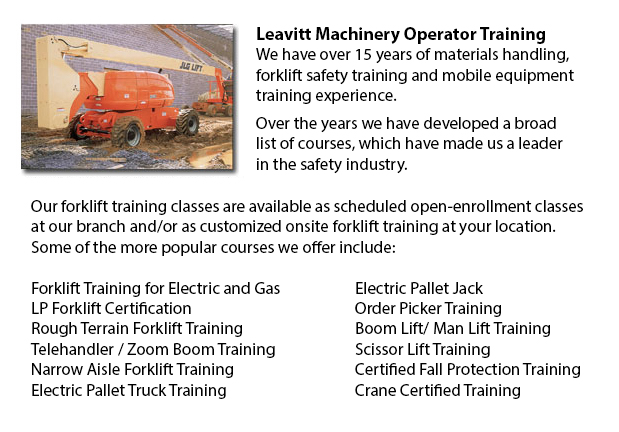
Aerial Lift Safety Training Goodyear - Each year, there are approximately 26 construction fatalities attributed to the utilization of aerial lifts. Nearly all of the craftsmen killed are electrical workers, laborers, ironworkers, carpenters or painters. Most deaths are caused by electrocutions, falls and tip-overs. The greatest risk is from boom-supported lifts, like for example bucket trucks and cherry pickers. Nearly all fatalities are related to this particular type of lift, with the rest involving scissor lifts. Other risks consist of being thrown out of a bucket, being struck by falling objects, and being caught between the guardrail or lift bucket and an object, such as a joist or steel beam.
To operate an aerial lift safely, perform a check on the following items before utilizing the device: emergency and operating controls, safety devices (like for instance, outriggers and guardrails), personal fall protection gear, and tires and wheels. Inspect for possible leaks in the air, fuel-system, hydraulic fluid. Check the device for loose or missing parts.
The areas where worker will make use of the aerial device should be checked thoroughly for potential dangers, like for example holes, bumps, drop-offs and debris. Overhead powerlines have to be monitored and avoided. It is recommended that aerial lift devices be utilized on level, stable surfaces. Don't work on steep slopes which go beyond slope limits that the manufacturer specified. Even on a slope which is level, outriggers, brakes and wheel chocks should be set.
Employers are needed to provide aerial lift operators and maintenance mechanics with the proper manuals. Operators and mechanics must be trained by a certified person experienced with the applicable type of aerial lift.
Aerial Lift Safety Tips:
o Prior to operating, close lift platform chains and doors.
o Do not lean over or climb on guardrails. Stand on the floor of the bucket or platform.
o Stay within manufacturer's load-capacity limits.
o When working near traffic, use proper work-zone warnings, like for instance cones and signs.
If proper procedures are followed, electrocutions are preventable. Stay at least ten feet away from whichever power lines and certified electricians should insulate and/or de-energize power lines. Those working must use personal protective tools and equipment, like insulated bucket. Nevertheless, an insulated bucket does not protect from electrocution if, for example, the worker touches a different wire providing a path to the ground.
Falls are avoidable if the individual working remains secure within guardrails or within the bucket by making use of a positioning device or a full-body harness. If there is an anchorage inside the bucket, a positioning belt along with a short lanyard is adequate.
Tip-overs are avoidable by following the manufacturer's instructions. Unless the manufacturer specifies otherwise, never drive when the lift platform is elevated. Adhere to the device's horizontal and vertical reach limits, and never exceed the load-capacity which is specified.
-
Crane / Overhead Crane / Truck Mounted Crane / Hydraulic Cranes Training in Goodyear
Bridge cranes or likewise called overhead cranes are a kind of industrial material handling crane making use of a line and hook device that runs on a horizontal beam running along two widely separated rails. Many overhead cranes can be seen inside a... More -
Fantuzzi Parts
The Italian Fantuzzi Group offers a glut of material handling equipment and heavy machinery. The equipment consists of numerous equipment specializing in transporting, loading and unloading goods. The railway freight sector and the port authority req... More -
Forklift Training School Goodyear
Forklift Training School Goodyear - Why A Forklift Training School Could Actually Help A Business And Its Employees - CSA and OSHA establish criteria for forklift safety training that meets existing regulations and standards. Anyone intending to oper... More -
Warehouse Forklift Training Classes Goodyear
Warehouse Forklift Training Classes Goodyear - The purpose of warehouse training classes are to raise the awareness of common workplace hazards. The trainees would learn necessary warehouse safety measures. An emphasis is placed on paying attention t... More -
Aerial Lift Ticket Goodyear
Aerial Lift Ticket Goodyear - A boom truck is frequently recognized by the cable and phone business vehicles that have the long arm folded over their roofs. Usually, a bucket-like apparatus sits at the extension of extendable arms. Sometimes termed a... More -
Telehandler Ticket Goodyear
Telehandler Ticket Goodyear - The telescopic handler or telehandler is a generally used equipment in agricultural and industrial applications. This machine is similar in look to a forklift and even works in a similar way, even though telehandlers are... More -
Scissor Lift Safety Training Goodyear
Scissor Lift Safety Training Goodyear - A Scissor Lift is a practical type of platform that normally moves in a vertical direction. The equipment is capable of this movement because of the use of folding supports that are linked in a criss-cross patt... More -
Aerial Boom Lift Training Goodyear
Aerial Boom Lift Training Goodyear - For individuals who operate or supervise the use of aerial lift platforms, right aerial boom lift Training is necessary. The aerial lift platform is for lifting individuals, materials and tools to elevated work lo... More

Forklift Training Goodyear
TOLL FREE: 1-888-254-6157
Goodyear, Arizona
forkliftcertificationgoodyear.com
Email Us
About Us


